Fleurs du Mal Magazine


Or see the index
‘En toch is alles wat we doen natuur’ bevat de mooiste natuurgedichten van dichter-tekenaar-bioloog Leo Vroman.
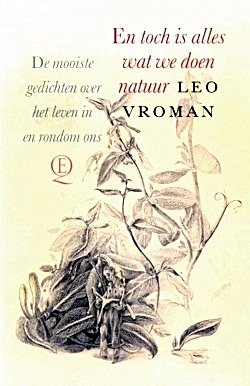 Vroman was gefascineerd door het leven in en rondom ons, dat hij tot in de wonderbaarlijkste details observeerde en beschreef.
Vroman was gefascineerd door het leven in en rondom ons, dat hij tot in de wonderbaarlijkste details observeerde en beschreef.
Tientallen bundels speelse poëzie schreef hij, een onuitputtelijke stroom gedichten van 1946 tot 2014, het jaar van zijn overlijden.
Mirjam van Hengel (auteur van het succesvolle Hoe mooi alles, over Leo en Tineke Vroman) maakte een nieuwe, ruime selectie uit de gedichten die Vroman schreef over de natuur – die van mensen, die van gras, bloemen en bomen, van orkanen en organen en van alle mogelijke dieren.
Leo Vroman (1915-2014) was dichter, prozaïst, essayist, illustrator en hematoloog. Hij studeerde biologie in Utrecht en vluchtte in 1940 naar Nederlands-Indië. In 1945 werd hij uit Japanse gevangenschap bevrijd en vestigde zich in Verenigde Staten, samen met zijn vrouw Tineke. Vroman debuteerde in 1946 met de bundel Gedichten. Vroman ontving in de loop van zijn leven zowat alle belangrijke literaire prijzen die er zijn. In 2006 verscheen het dagboek Misschien tot morgen.
En toch is alles wat we doen natuur
De mooiste gedichten over het leven in en rondom ons
Auteur: Leo Vroman
Redactie: Mirjam van Hengel
Uitgeverij: Querido
Hardcover
Taal: Nederlands
Afmetingen: 31x223x142 mm
Gewicht:481,00 gram
Verschijningsdatum: 6 maart 2018
Druk 1
ISBN10 902140902X
ISBN13 9789021409023
Prijs: € 24,99
# Voor meer informatie ga naar de website: www.vromanfoundation.com
new books
fleursdumal.nl magazine
More in: Archive U-V, Archive U-V, Art & Literature News, Natural history, Vroman, Leo

Joachim Ringelnatz
Seepferdchen
Als ich noch ein Seepferdchen war,
Im vorigen Leben,
Wie war das wonnig, wunderbar,
Unter Wasser zu schweben.
In den träumenden Fluten
Wogte, wie Güte, das Haar
Der zierlichsten aller Seestuten,
Die meine Geliebte war.
Wir senkten uns still oder stiegen,
Tanzten harmonisch umeinand,
Ohne Arm, ohne Bein, ohne Hand,
Die Wolken sich in Wolken wiegen.
Sie spielte manchmal graziöses Entfliehn,
Auf daß ich ihr folge, sie hasche,
Und legte mir einmal im Ansichziehn
Eierchen in die Tasche.
Sie blickte traurig und stellte sich froh,
Schnappte nach einem Wasserfloh
Und ringelte sich
An einem Stengelchen fest und sprach so:
Ich liebe dich!
Du wieherst nicht, du äpfelst nicht,
Du trägst ein farbloses Panzerkleid
Und hast ein bekümmertes altes Gesicht,
Als wüßtest du um kommendes Leid.
Seestütchen! Schnörkelchen! Ringelnaß!
Wann war wohl das?
Und wer bedauert wohl später meine restlichen Knochen?
Es ist beinahe so, daß ich weine –
Lollo hat das vertrocknete, kleine
Schmerzverkrümmte Seepferd zerbrochen.
Joachim Ringelnatz
(1883 – 1934)
Seepferdchen
fleursdumal.nl magazine
More in: Archive Q-R, Joachim Ringelnatz, Natural history
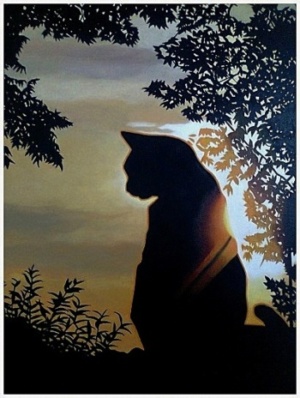
Vincent Berquez©: Cat in dusk
Vincent Berquez is a London–based artist and poet. He has published in Britain, Europe, America and New Zealand. His work is in many anthologies, collections and magazine worldwide. Vincent Berquez was requested to write a Tribute as part of ‘Poems to the American People’ for the Hastings International Poetry Festival for 9/11, read by the mayor of New York at the podium. He has also been commissioned to write a eulogy by the son of Chief Albert Nwanzi Okoluko, the Ogimma Obi of Ogwashi-Uku to commemorate the death of his father. Berquez has been a judge many times, including for Manifold Magazine and had work read as part of Manifold Voices at Waltham Abbey. He has recited many times, including at The Troubadour and the Pitshanger Poets, in London. In 2006 his name was put forward with the Forward Prize for Literature. He recently was awarded a prize with Decanto Magazine. Berquez is now a member of London Voices who meet monthly in London, United Kingdom.
Vincent Berquez has also been collaborating in 07/08 with a Scottish composer and US film maker to produce a song-cycle of seven of his poems for mezzo-soprano and solo piano. These are being recorded at the Royal College of Music under the directorship of the concert pianist, Julian Jacobson. In 2009 he will be contributing 5 poems for the latest edition of A Generation Defining Itself, as well as 3 poems for Eleftheria Lialios’s forthcoming book on wax dolls published in Chicago. He also made poetry films that have been shown at various venues, including a Polish/British festival in London, Jan 07.
As an artist Vincent Berquez has exhibited world wide, winning prizes, such as at the Novum Comum 88’ Competition in Como, Italy. He has worked with an art’s group, called Eins von Hundert, from Cologne, Germany for over 16 years. He has shown his work at the Institute of Art in Chicago, US, as well as many galleries and institutions worldwide. Berquez recently showed his paintings at the Lambs Conduit Festival, took part in a group show called Gazing on Salvation, reciting his poetry for Lent and exhibiting paintings/collages. In October he had a one-man show at Sacred Spaces Gallery with his Christian collages in 2007. In 2008 Vincent Berquez had a solo show of paintings at The Foundlings Museum and in 2011 an exposition with new work in Langham Gallery London.
fleursdumal.nl magazine for art & literature
More in: Berquez, Vincent, FDM Art Gallery, Natural history, Vincent Berquez
 De Parelduiker pakt het thema van de Boekenweek op en stelt de vraag: hoezo natuur?
De Parelduiker pakt het thema van de Boekenweek op en stelt de vraag: hoezo natuur?
In dit themanummer naar aanleiding van de Boekenweek vier verhalen over schrijvers en kunstenaars die ieder een ‘andere’ kant van de natuur leerden kennen.
Joris van Casteren volgde de voetsporen van Gerard Bilders (1838-1865). In het vieze Amsterdam ging deze jonge schrijver en landschapsschilder op tragische wijze ten onder. Tot op zijn sterfbed, in een benauwd pand aan een stinkende gracht, hunkerde hij naar de natuur en het buitenleven.
Madelon de Keizer schrijft over Albert Verwey. Anders dan diens vriend Willem Kloos, die het bij de stad en zijn verlokkingen hield, koos Verwey na zijn huwelijk met Kitty van Vloten voor een leven dichter bij de natuur en stichtte met haar een gezin in een huis op een duin te Noordwijk. Zij zetten zich in voor het herstel van de band tussen mens en natuur, die door de verstedelijking teloor dreigde te gaan.
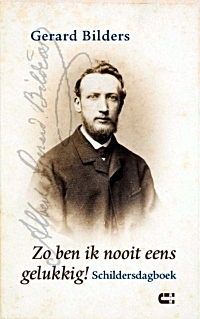 Nescio bezong, zo schrijft biografe Lieneke Frerichs, onbezorgd de schoonheid van zomerse glooiende korenvelden, terwijl hij met zijn dochters door Noord-Frankrijk fietste.
Nescio bezong, zo schrijft biografe Lieneke Frerichs, onbezorgd de schoonheid van zomerse glooiende korenvelden, terwijl hij met zijn dochters door Noord-Frankrijk fietste.
Willem van Toorn ten slotte zette zich op initiatief van kunstschilder Willem den Ouden in voor zorgvuldige, vernuftiger dijkverbeteringen die het Nederlandse rivierenlandschap zoveel mogelijk zouden sparen, aldus Marco Daane. Hij laat zien dat Van Toorns betrokkenheid hierbij ook sporen heeft achtergelaten in zijn literaire werk.
In memoriam Jaap Harten en Menno Wigman.
De Parelduiker is een uitgave van Uitgeverij Bas Lubberhuizen – Johannes Vermeerstraat 63 – 1071 DN Amsterdam – Postbus 15511 – 1001 NA Amsterdam – T 020 5706 100
# Voor meer informatie zie de website van de parelduiker
boekenweek 2018
fleursdumal.nl magazine
More in: Art & Literature News, Boekenweek, LITERARY MAGAZINES, Natural history, Wigman, Menno, Willem van Toorn
A powerful new collection of poetry from the National Book Critics Circle Award nominee and recipient of the Forward Poetry Prize.
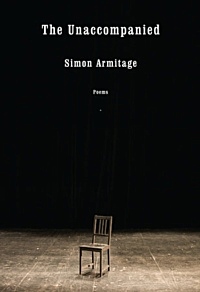
In The Unaccompanied, Armitage gives voice to the people of Britain with a haunting grace.
We meet characters whose sense of isolation is both emotional and political, both real and metaphorical, from a son made to groom the garden hedge as punishment, to a nurse standing alone at a bus stop as the centuries pass by, to a latter-day Odysseus looking for enlightenment and hope in the shadowy underworld of a cut-price supermarket.
We see the changing shape of England itself, viewed from a satellite “like a shipwreck’s carcass raised on a sea-crane’s hook, / nothing but keel, beams, spars, down to its bare bones.”
In this exquisite collection, Armitage X-rays the weary but ironic soul of his nation, with its “Songs about mills and mines and a great war, / lines about mermaids and solid gold hills, / songs from broken hymnbooks and cheesy films”–in poems that blend the lyrical and the vernacular, with his trademark eye for detail and biting wit.
Simon Armitage was born in West Yorkshire and is Professor of Poetry at the University of Sheffield. A recipient of numerous prizes and awards, he has published eleven collections of poetry, including Seeing Stars, Paper Aeroplane: Selected Poems 1989 – 2014, and his acclaimed translation of Sir Gawain and the Green Knight.
The Shout: Selected Poems, was nominated for the National Book Critics Circle Award and his translation of the medieval poem Pearl received the 2017 PEN Award for Poetry in Translation. He writes extensively for radio and television, has published three best-selling non-fiction titles, and his theatre works include The Last Days of Troy, performed at Shakespeare’s Globe in London. He has taught at the University of Iowa’s Writers’ Workshop, and in 2015 was appointed Professor of Poetry at Oxford University.
Simon Armitage
The Unaccompanied
Poems
Published by Knopf
Hardcover
$27.00
Aug. 2017
96 Pages
ISBN 9781524732424
new poetry
fleursdumal.nl magazine
More in: #Editors Choice Archiv, - Book News, Archive A-B, Archive A-B, Armitage, Simon, Art & Literature News, Mermaids
The year 1818 saw the publication of one of the most influential science-fiction stories of all time.
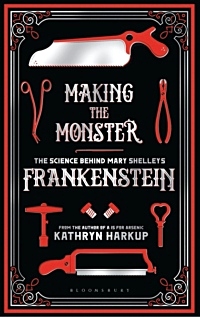 Frankenstein: Or, Modern Prometheus by Mary Shelley had a huge impact on gothic horror and science-fiction genres, and her creation has become part of our everyday culture, from cartoons to Hallowe’en costumes. Even the name ‘Frankenstein’ has become a by-word for evil scientists and dangerous experiments. How did a teenager with no formal education come up with the idea for an extraordinary novel such as Frankenstein?
Frankenstein: Or, Modern Prometheus by Mary Shelley had a huge impact on gothic horror and science-fiction genres, and her creation has become part of our everyday culture, from cartoons to Hallowe’en costumes. Even the name ‘Frankenstein’ has become a by-word for evil scientists and dangerous experiments. How did a teenager with no formal education come up with the idea for an extraordinary novel such as Frankenstein?
Clues are dotted throughout Georgian science and popular culture. The years before the book’s publication saw huge advances in our understanding of the natural sciences, in areas such as electricity and physiology, for example. Sensational science demonstrations caught the imagination of the general public, while the newspapers were full of lurid tales of murderers and resurrectionists.
Making the Monster explores the scientific background behind Mary Shelley’s book. Is there any science fact behind the science fiction? And how might a real-life Victor Frankenstein have gone about creating his monster? From tales of volcanic eruptions, artificial life and chemical revolutions, to experimental surgery, ‘monsters’ and electrical experiments on human cadavers, Kathryn Harkup examines the science and scientists that influenced Shelley, and inspired her most famous creation.
Kathryn Harkup is a chemist and author. Kathryn completed a PhD then a postdoc at the University of York before realising that talking, writing and demonstrating science appealed far more than spending hours slaving over a hot fume-hood. Kathryn went on to run outreach in engineering, computing, physics and maths at the University of Surrey, which involved writing talks on science and engineering topics that would appeal to bored teenagers, and she is now a science communicator delivering talks and workshops on the quirky side of science.
Making the Monster
The Science Behind Mary Shelley’s Frankenstein
By: Kathryn Harkup
Published: 08-02-2018
Format: Hardback
Edition: 1st
Extent: 304 pp
ISBN: 9781472933737
Imprint: Bloomsbury Sigma
Illustrations: 11 black and white illustrations
Dimensions: 216 x 135 mm
£16.99
new books
fleursdumal.nl magazine
More in: - Book News, Archive G-H, Archive S-T, Archive S-T, Art & Literature News, Mary Shelley, Natural history, Percy Byssche Shelley, Shelley, Mary, Shelley, Percy Byssche, Tales of Mystery & Imagination
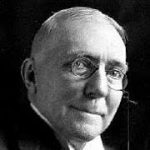
The Bat
I
Thou dread, uncanny thing,
With fuzzy breast and leathern wing,
In mad, zigzagging flight,
Notching the dusk, and buffeting
The black cheeks of the night,
With grim delight!
II
What witch’s hand unhasps
Thy keen claw-cornered wings
From under the barn roof, and flings
Thee forth, with chattering gasps,
To scud the air,
And nip the ladybug, and tear
Her children’s hearts out unaware?
III
The glowworm’s glimmer, and the bright,
Sad pulsings of the firefly’s light,
Are banquet lights to thee.
O less than bird, and worse than beast,
Thou Devil’s self, or brat, at least,
Grate not thy teeth at me!
James Whitcomb Riley
(1849-1916)
The Bat
fleursdumal.nl magazine
More in: Archive Q-R, Archive Q-R, CLASSIC POETRY, Natural history
From the best-selling author of Gratitude, On the Move, and Musicophilia, a collection of essays that displays Oliver Sacks’s passionate engagement with the most compelling and seminal ideas of human endeavor: evolution, creativity, memory, time, consciousness, and experience.
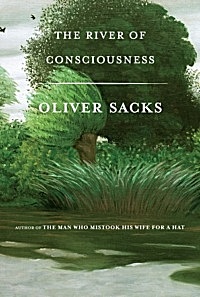 Oliver Sacks, a scientist and a storyteller, is beloved by readers for the extraordinary neurological case histories (Awakenings, An Anthropologist on Mars) in which he introduced and explored many now familiar disorders–autism, Tourette’s syndrome, face blindness, savant syndrome.
Oliver Sacks, a scientist and a storyteller, is beloved by readers for the extraordinary neurological case histories (Awakenings, An Anthropologist on Mars) in which he introduced and explored many now familiar disorders–autism, Tourette’s syndrome, face blindness, savant syndrome.
He was also a memoirist who wrote with honesty and humor about the remarkable and strange encounters and experiences that shaped him (Uncle Tungsten, On the Move, Gratitude).
Sacks, an Oxford-educated polymath, had a deep familiarity not only with literature and medicine but with botany, animal anatomy, chemistry, the history of science, philosophy, and psychology.
The River of Consciousness is one of two books Sacks was working on up to his death, and it reveals his ability to make unexpected connections, his sheer joy in knowledge, and his unceasing, timeless project to understand what makes us human.
Oliver Sacks was born in 1933 in London and was educated at Queen’s College, Oxford. He completed his medical training at San Francisco’s Mount Zion Hospital and at UCLA before moving to New York.
Familiar to the readers of The New Yorker and The New York Review of Books, Dr. Sacks spent more than fifty years working as a neurologist and wrote many books, including The Man Who Mistook His Wife for a Hat, Musicophilia, and Hallucinations, about the strange neurological predicaments and conditions of his patients.
The New York Times referred to him as “the poet laureate of medicine,” and over the years he received many awards, including honors from the Guggenheim Foundation, the National Science Foundation, the American Academy of Arts and Letters, The American Academy of Arts and Sciences, and the Royal College of Physicians. His memoir On the Move was published shortly before his death in August 2015.
The River of Consciousness
By Oliver Sacks
Hardcover
Oct 24, 2017
256 Pages
$27.00
Published by Knopf
5-1/2 x 8-3/8
ISBN 9780385352567
new books
fleursdumal.nl magazine
More in: - Book News, - Book Stories, Archive S-T, Art & Literature News, AUDIO, CINEMA, RADIO & TV, DRUGS & DISEASE & MEDICINE & LITERATURE, Natural history, Oliver Sacks, Psychiatric hospitals

Joachim Ringelnatz
Aus der Vogelkunde
Ich spreche von Flugmaschinen.
Sie summen lauter als Bienen
Und sind eine Kreuzung von Taube,
Ente, Maikäfer und Schiffsschraube.
Sie nisten einzeln, paar- und gruppen-
Weise in Hallen und Schuppen.
Ich habe persönlich festgestellt:
Sie bringen lebendige Junge zur Welt,
Die wie Menschen aussehn,
Wenn sie aus ihnen herausgehn.
Auch legen sie Eier und brüten
Im Krieg. Zeus möge das künftig verhüten.
Ihre Nahrung sind Menschen, Koffer, Benzin
Und Zeitungen aus Berlin.
Sie sind über die ganze Welt
Verbreitet und sehr zahm auch in Freiheit.
Außerdem sind sie der Polizeiheit
Und der Zollbehördlichkeit unterstellt.
Volkstümlich nennt man sie schlechthin Maschinen.
Ich könnte Ihnen mit Näherem dienen,
Aber ich verlange dafür
Eine Flugzeugengebühr.
Joachim Ringelnatz
(1883 – 1934)
Aus der Vogelkunde
fleursdumal.nl magazine
More in: Archive Q-R, Joachim Ringelnatz, Natural history
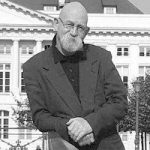
Jaag zacht
Praat niet hardop in het woud.
Dat is voor niets goed. Immers:
de waarheid is als een schuw dier.
Mensen hebben er schrik van.
Bert Bevers
gedicht: Jaag zacht
Verschenen in de Enghuizer Dialogen VIII, Hummelo, mei 2017
Bert Bevers is a poet and writer who lives and works in Antwerp (Be)
fleursdumal.nl magazine
More in: Archive A-B, Archive A-B, Bevers, Bert, Natural history

The Prairie
The skies are blue above my head,
The prairie green below,
And flickering o’er the tufted grass
The shifting shadows go,
Vague-sailing, where the feathery clouds
Fleck white the tranquil skies,
Black javelins darting where aloft
The whirring pheasant flies.
A glimmering plain in drowsy trance
The dim horizon bounds,
Where all the air is resonant
With sleepy summer sounds,
The life that sings among the flowers,
The lisping of the breeze,
The hot cicala’s sultry cry,
The murmurous dream of bees.
The butterfly a flying flower
Wheels swift in flashing rings,
And flutters round his quiet kin,
With brave flame-mottled wings.
The wild Pinks burst in crimson fire,
The Phlox’ bright clusters shine,
And Prairie-Cups are swinging free
To spill their airy wine.
And lavishly beneath the sun,
In liberal splendor rolled,
The Fennel fills the dipping plain
With floods of flowery gold;
And widely weaves the Iron-Weed
A woof of purple dyes
Where Autumn’s royal feet may tread
When bankrupt Summer flies.
In verdurous tumult far away
The prairie-billows gleam,
Upon their crests in blessing rests
The noontide’s gracious beam.
Low quivering vapors steaming dim
The level splendors break
Where languid Lilies deck the rim
Of some land-circled lake.
Far in the East like low-hung clouds
The waving woodlands lie;
Far in the West the glowing plain
Melts warmly in the sky.
No accent wounds the reverent air,
No footprint dints the sod,-
Lone in the light the prairie lies,
Rapt in a dream of God.
Illinois, 1858
John Hay
(1838-1905)
The Prairie
fleursdumal.nl magazine
More in: Archive G-H, Archive G-H, Natural history, Western Fiction
An exploration of the world’s most famous and challenging song cycle, Schubert’s Winter Journey (Winterreise), by a leading interpreter of the work, who teases out the themes—literary, historical, psychological—that weave through the twenty-four songs that make up this legendary masterpiece.
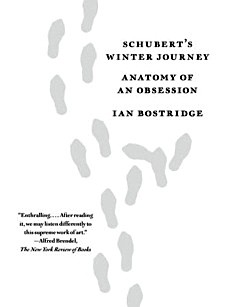 Completed in the last months of the young Schubert’s life, Winterreise has come to be considered the single greatest piece of music in the history of Lieder. Deceptively laconic—these twenty-four short poems set to music for voice and piano are performed uninterrupted in little more than an hour—it nonetheless has an emotional depth and power that no music of its kind has ever equaled.
Completed in the last months of the young Schubert’s life, Winterreise has come to be considered the single greatest piece of music in the history of Lieder. Deceptively laconic—these twenty-four short poems set to music for voice and piano are performed uninterrupted in little more than an hour—it nonetheless has an emotional depth and power that no music of its kind has ever equaled.
A young man, rejected by his beloved, leaves the house where he has been living and walks out into snow and darkness. As he wanders away from the village and into the empty countryside, he experiences a cascade of emotions—loss, grief, anger, and acute loneliness, shot through with only fleeting moments of hope—until the landscape he inhabits becomes one of alienation and despair.
Originally intended to be sung to an intimate gathering, performances of Winterreise now pack the greatest concert halls around the world.
Drawing equally on his vast experience performing this work (he has sung it more than one hundred times), on his musical knowledge, and on his training as a scholar, Bostridge teases out the enigmas and subtle meanings of each of the twenty-four lyrics to explore for us the world
Schubert inhabited, his biography and psychological makeup, the historical and political pressures within which he became one of the world’s greatest composers, and the continuing resonances and affinities that our ears still detect today, making Schubert’s wanderer our mirror.
Ian Bostridge performs regularly throughout Europe, North America and the Far East to outstanding critical acclaim. He read Modern History at Oxford and received a D.Phil in 1990. He is the author of Witchcraft and Its Transformations c.1650-c.1750 and A Singer’s Notebook. He is Humanitas Professor of Music at the University of Oxford and a regular contributor to The Guardian and the TLS. He is married to the writer and critic Lucasta Miller. They live in London with their two children.
Schubert’s Winter Journey
Anatomy of an Obsession
By Ian Bostridge
Paperback
Published on Jan 02, 2018
Published by Vintage
528 Pages
$22.00
ISBN 9780525431800
new books
fleursdumal.nl magazine
More in: # Music Archive, - Book Lovers, - Book News, 4SEASONS#Winter, Archive A-B, Art & Literature News
Thank you for reading Fleurs du Mal - magazine for art & literature